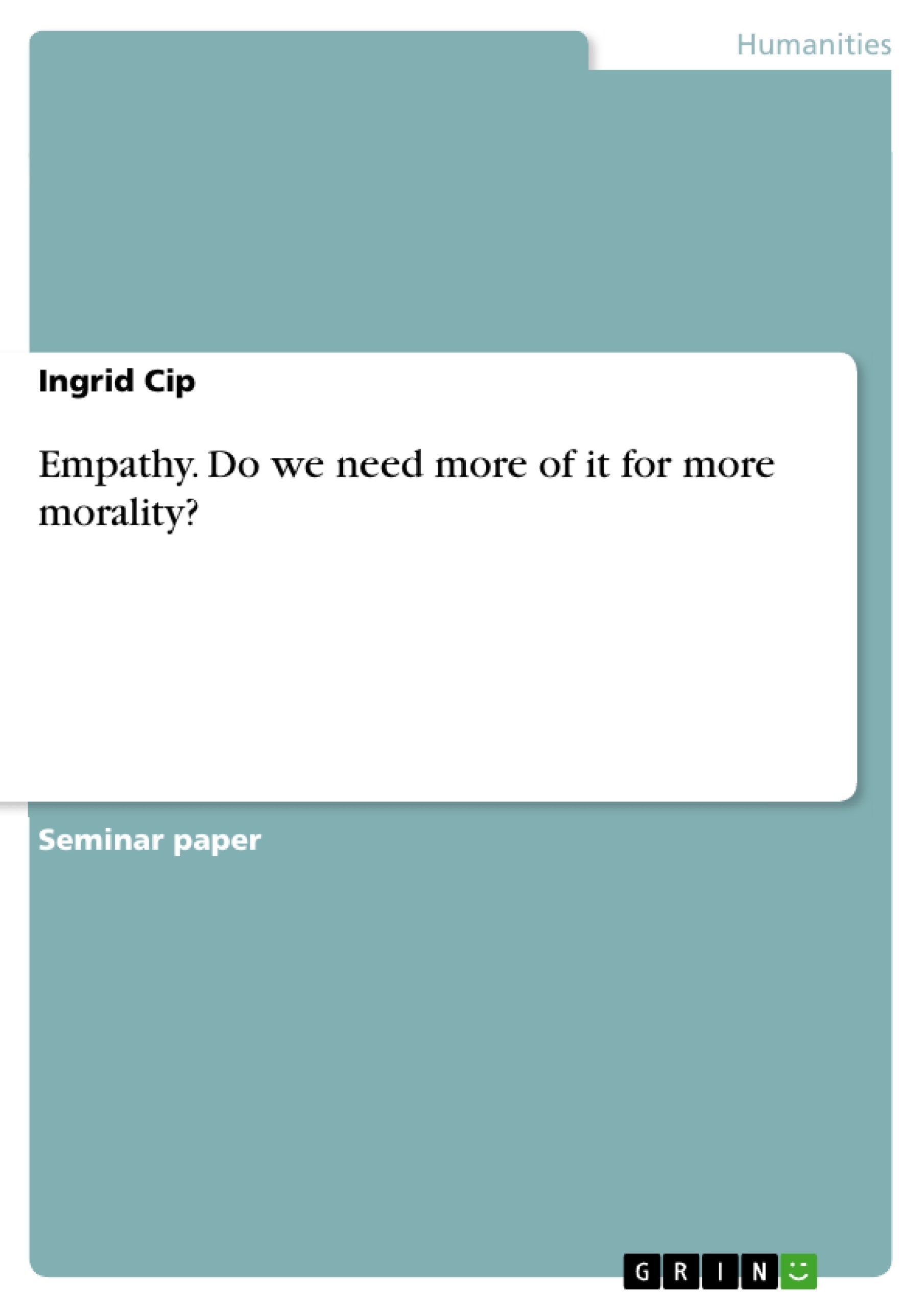Empathy seems to be a phylogenetically ancient mechanism that helps not only animals but also humans to cooperate and coexist in social communities. Many authors have covered the topic from philosophical, psychological and anthropological perspectives. In this paper, I will take a closer look into the features and different modes of empathy and how they are used in daily life by looking at practical examples how empathy is demonstrated and what the outcome is. I will then argue, that a healthy person can willingly and individually influence the level of empathy towards other people and use it either supportive or manipulative. In this context, I will highlight some of the negative comments on the concept of empathy and the concerns that are expressed. I will argue then, that the illusion that increased empathy in humans will lead to higher morality will not come up to the expectations.
Inhaltsverzeichnis (Table of Contents)
- I. Introduction
- II. Features of Empathy
- From a psychological viewpoint Hoffman (2000) suggested a differentiated model that also described an ontogenetical stepwise approach:
- Philosophers on the other hand have come up with many different and often conflicting explanations.-
- Amy Coplan (2011) (p.4) listed some of the most popular processes described as empathy:
- III. How do we use the information gained from empathic processes.
- IV. Are we losing our empathy skills? .
- V. The critics and the opponents of empathy.
- VI. Conclusion: do we need more empathy to lead moral lives? ..
Zielsetzung und Themenschwerpunkte (Objectives and Key Themes)
This paper explores the complex relationship between empathy and morality. It aims to analyze the features and different modes of empathy, examining how these processes are used in daily life. The paper will investigate whether increased empathy leads to a more moral society, considering both potential benefits and drawbacks.
- Features and Modes of Empathy
- The Role of Empathy in Daily Life
- The Relationship between Empathy and Morality
- The Potential Benefits and Drawbacks of Increased Empathy
- The Critics and Opponents of Empathy
Zusammenfassung der Kapitel (Chapter Summaries)
The introduction sets the stage by highlighting the importance of empathy in facilitating cooperation and coexistence within social groups. It emphasizes the evolutionary development of empathy and introduces the central question: will an increase in empathy lead to a morally better society?
Chapter II delves into the features of empathy, drawing upon different perspectives from psychology and philosophy. It examines various models and theories of empathy, including Hoffman's ontogenetical stepwise approach and Vignemont and Jacob's definition of empathic pain. The chapter also discusses Coplan's identification of key processes associated with empathy.
Chapter III investigates how individuals use the information gained from empathic processes. It explores both supportive and manipulative applications of empathy, highlighting the conscious use of this information in social interactions.
Chapter IV addresses the question of whether empathy is declining in modern society. It examines potential reasons for this trend and provides illustrative examples.
Chapter V explores the critiques and objections to empathy, examining concerns about "too much empathy" and the potential for being misled despite good intentions.
Schlüsselwörter (Keywords)
This paper focuses on the concepts of empathy and morality. It explores the various features and modes of empathy, including supportive empathy and manipulatory empathy. It investigates the evolutionary development of empathy and the potential for increasing empathy to improve societal morality.
- Citar trabajo
- Ingrid Cip (Autor), 2017, Empathy. Do we need more of it for more morality?, Múnich, GRIN Verlag, https://www.grin.com/document/374406



